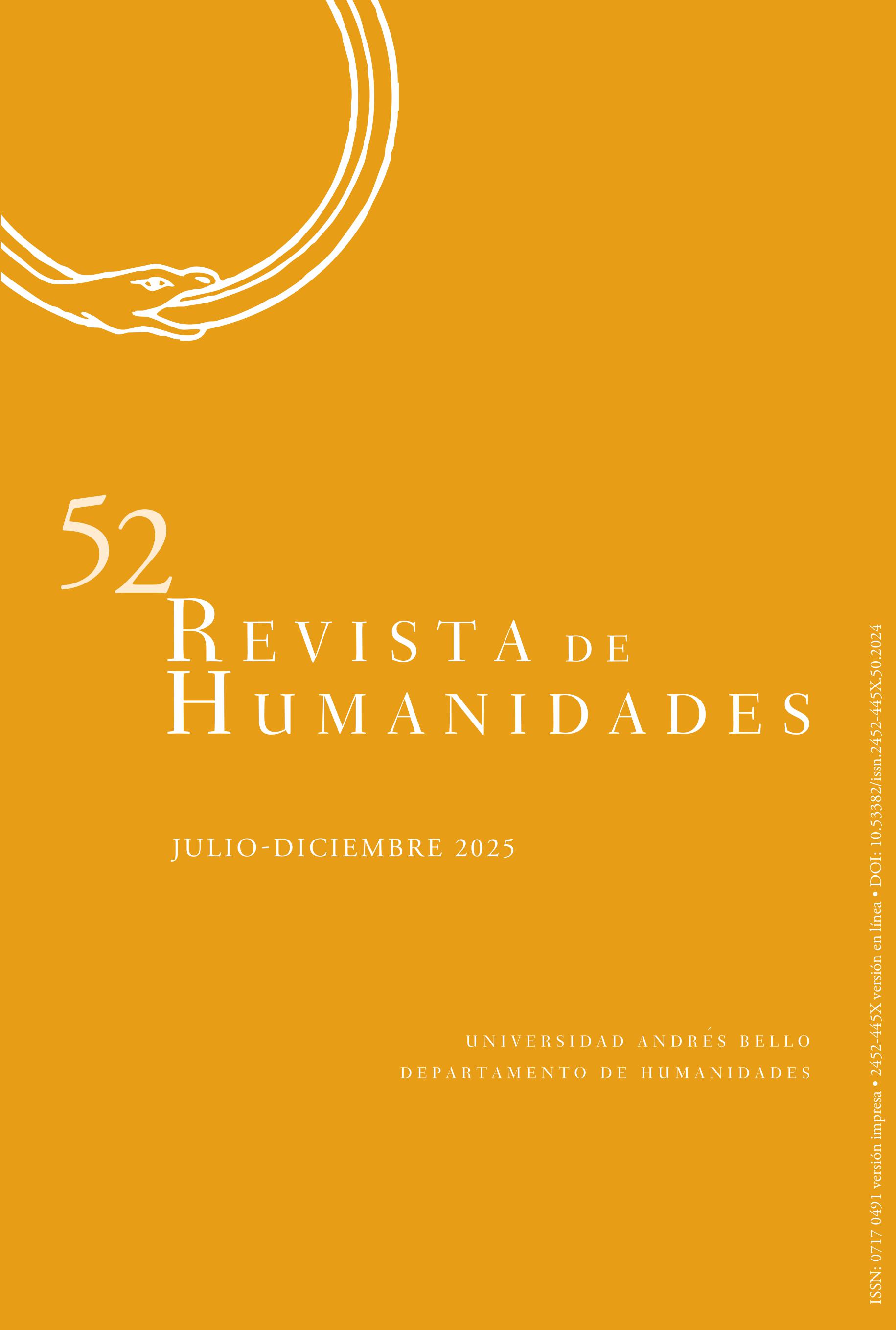Sobre la revista
Revista de Humanidades se encuentra incluida en las bases de datos CLASE (Citas Latinoamericanas en Ciencias Sociales y Humanidades), Latindex directorio, Redalyc, Erih Plus, MLA, Dialnet y SCOPUS. Todos los artículos presentados a la revista son revisados con la herramienta TURNITIN para la detección de plagio.
Número actual
Presentación
Dossier
Documentos
La Revista de Humanidades, fundada en 1993, es una publicación semestral del Departamento de Humanidades de la Universidad Andrés Bello. Su objetivo es abrir un espacio para la reflexión crítica y el diálogo interdisciplinario en el ámbito de las humanidades. Nuestra publicación está dirigida a investigadores, académicos, estudiantes y lectores en general. La Revista de Humanidades acoge artículos especializados surgidos de investigaciones, aceptamos también documentos –notas, entrevistas, traducciones– y reseñas, que aborden temas en las áreas de literatura, filosofía e historia, u otros ámbitos, con un énfasis en el diálogo entre disciplinas afines a nuestra revista,revisar sección colaboradores. Revista de Humanidades se encuentra incluida en las bases de datos CLASE (Citas Latinoamericanas en Ciencias Sociales y Humanidades), Latindex directorio, Latindex Catálogo, Redalyc, Erih Plus, MLA y SCOPUS. Todos los artículos presentados a la revista son revisados con la herramienta TURNITIN para la detección de plagio.
Revista de Humanidades recibe colaboraciones entre marzo y diciembre . La periodicidad de la revista es semestral: enero y julio. El número correspondiente a enero tiene dos secciones, un dossier con una convocatoria abierta previamente, y una sección miscelánea semestral. El segundo número anual solo considera esta segunda sección.
ISSN 0717-0491, versión impresa
ISSN 2452-445X, versión digital













